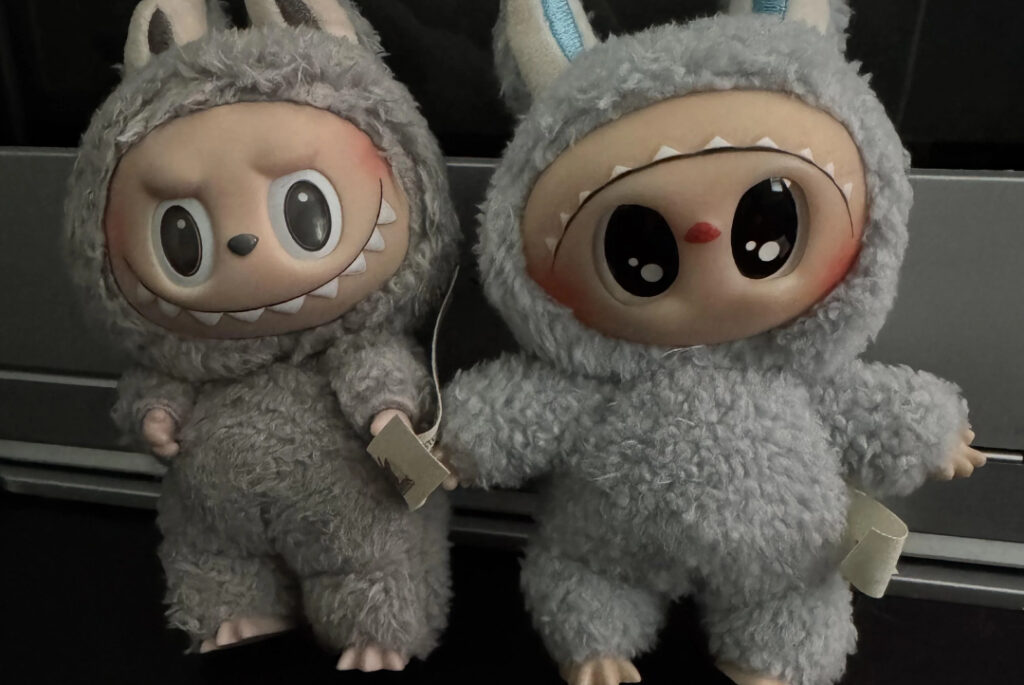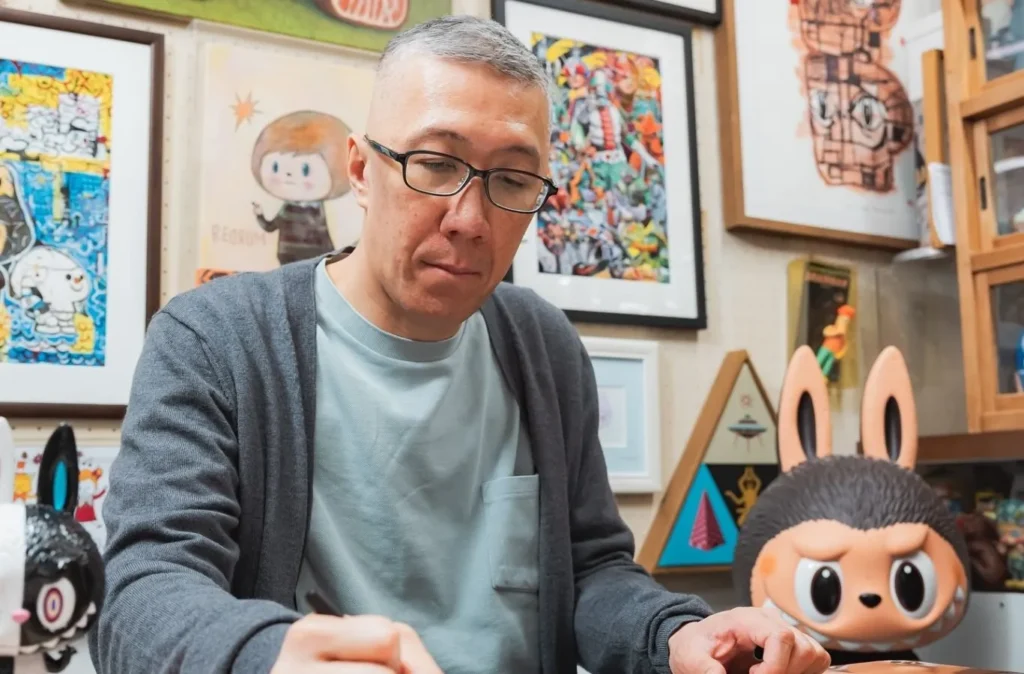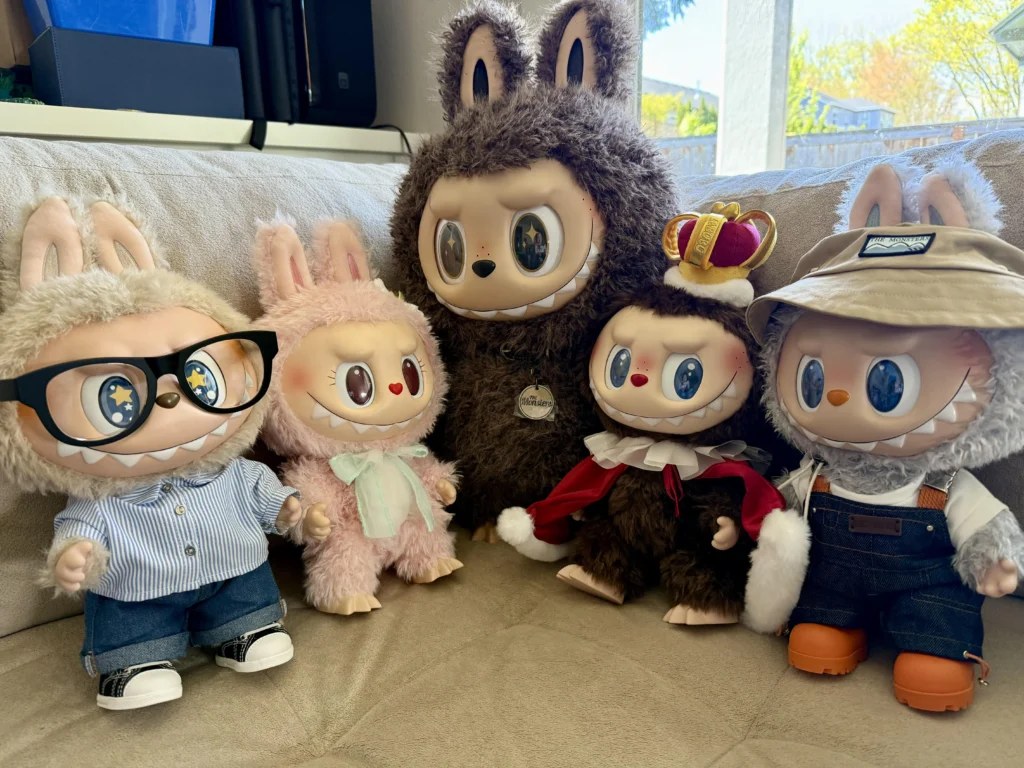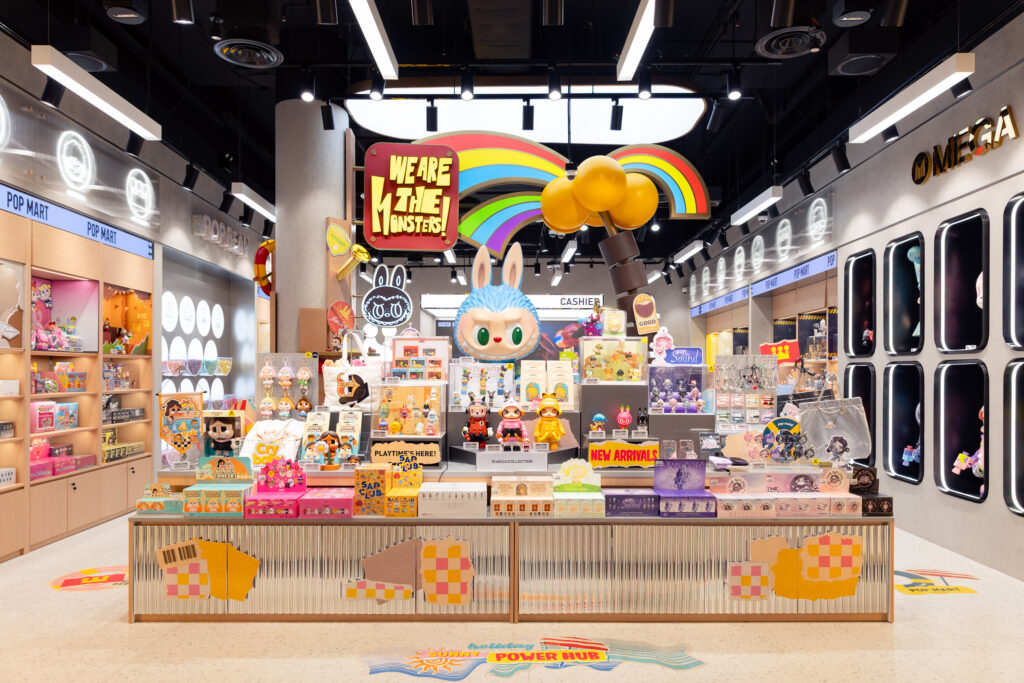What Is Lafufu? Origins, Memes & the Curious Charm of Fake Labubus
Blink and you might think it’s just another Labubu—same serrated grin, same satellite-dish ears. Look closer and the holo-seal is missing, the smile prints off-center, and the box reads “The Monstes.” Congratulations: you’ve met Lafufu, the nickname collectors coined for counterfeit Labubus that flooded the scene during the vinyl boom of 2024-25. The label started as a one-liner in a Reddit rant, yet within weeks it had snowballed into a full-blown meme: Instagram roasts, TikTok dance duets and even Discord “Adopt-a-Lafufu” channels turned the fake into fandom folklore.
Ironically, that joke now functions as community immune-system. By laughing at Lafufu, collectors teach newcomers to spot red flags, turning a scam into free education. In the process, the counterfeit mascot gained a personality of its own—half cautionary tale, half lovable gremlin sneaking into display cases worldwide.
From Counterfeit to Catchphrase
The word “Lafufu” wasn’t trademarked or marketed; it simply bubbled up in mid-2024 when frustrated buyers compared horror stories of warped vinyl and solvent reek. One poster joked his figure felt “laa fuu-fuu,” Cantonese street slang for “kinda sloppy.” Screenshots jumped to Instagram; TikTok creators filmed “Labubu vs Lafufu” skits that racked up millions of views, and the name stuck before Pop Mart’s legal team could draft a statement.
Memetic snowballing followed classic internet physics. Every time Pop Mart warned against fakes, engagement spiked again. The harder the official channel pushed, the louder the joke echoed—proof, perhaps, that humor beats cease-and-desist in the court of public attention.
Why So Many Fakes?
The answer lies in blind-box economics. Each Labubu wave offers twelve designs plus a 1-in-72 secret, but global demand now overshoots Pop Mart’s production capacity by roughly 40 percent. Counterfeit factories in Shenzhen and Yiwu sniff opportunity: clone the mold, skip the hologram, ship worldwide at one-third retail, and pocket the spread before takedowns land.
The pipeline is lightning fast. “Lafufu Series 0”—a full fake run of the Macaron wave—hit Southeast-Asian e-markets just 18 days after the official launch. By the time Pop Mart upgraded security foils, Lafufus already littered resale listings, primed for meme immortality.
How to Spot a Lafufu
Seasoned collectors swear by three tests—weight, print, and smell. Genuine minis weigh about 30 g and feel solid; hollow Lafufus dip under 22 g. Eyes on real figures show crisp matte whites and razor-sharp pupils; fakes bleed paint or gloss over the gums. Finally, that nose test: authentic vinyl smells faintly “new-toy” and airs out quickly, whereas Lafufu plastic stings the nostrils for days.
- Packaging tell-tales: missing hologram, QR code that scans more than once, or a CE logo with uneven stroke weight.
- Sculpt errors: visible seam on the ear, crooked tooth alignment, wobble in the tail when tapped.
- Sound check: bounce it—real Labubu thuds; Lafufu rattles or rings hollow.
The Meme Economy
Counterfeit scorn morphed into ironic affection. Re-painters treat Lafufus as $4 canvases, freeing them to experiment without risking a $15 original. TikTok pranksters stage “Lafufu Heists,” swapping a fake into a friend’s display for viral laughs. Podcasts debate ethics: does joking about Lafufu normalise fakes, or does it inoculate the community by teaching authentication through humor?
Strangest of all, a mini-market has emerged for “meta-customs”: artists buy Lafufus, exaggerate their flaws—crooked crowns, missing teeth—and resell them as parody art. These pieces often fetch more than standard Labubu retail, proving that narrative sometimes outweighs material authenticity.
Pop Mart’s Response
Officially, Pop Mart operates a zero-tolerance policy. Late 2024 brought layered holograms; spring 2025 added NFC chips under box flaps; monthly takedown sweeps hit major e-commerce platforms. Yet the brand’s social media occasionally leans into the meme, posting tongue-in-cheek “Know Your Lafufu” graphics that educate without finger-wagging.
Collectors remain divided. Purists refuse shelf space to any fake vinyl, while others keep a single Lafufu as a conversation starter—proof of the boom years when demand out-paced supply and the internet answered fraud with farce.
Will Lafufu Fade or Evolve?
Meme lifecycles are fickle, yet Lafufu shows staying power. As long as chase odds stay punishing and resale prices climb, counterfeiters will chase profit—and fans will find new ways to parody them. We’ve already seen web-comics starring Lafufu as Labubu’s mischievous twin, and rumors swirl that a designer-toy artist plans an “Official Lafufu” collab to satirize the situation from inside the tent.
If Pop Mart ever drops an authorized “Evil Twin” variant, expect reality and parody to blur even further. Until then, Lafufu remains equal parts cautionary label and comedic relief—reminding us that in collector culture, even a fake can earn a real place in the story.
For newcomers, Lafufu is a warning: verify holograms, trust your senses, question miracle prices. For veterans, it’s a shared inside joke that keeps the hobby lighthearted. Either way, knowing the lore behind the name adds texture to every future unboxing—because sometimes the best defense against scams is a community that can laugh, learn and level-up together.






